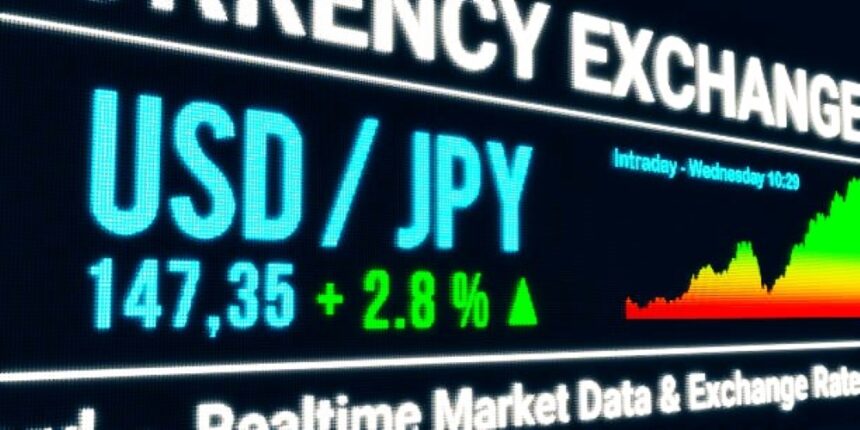The ambiguity surrounding the Bank of Japan’s monetary position continues to damage the Japanese yen.
The Japanese Yen (JPY) remained on the defensive versus its American counterpart coming into the European session. Hovering near a one and a half week low reached earlier this Monday. Last week. Bank of Japan (BoJ) Governor Kazuo Ueda provided a significantly bleaker assessment of the economic situation. This, together with the lower Machinery Orders data from Japan. And the news that the BoJ will conduct This week’s unexpected bond operation hurts the Japanese yen.
Hawkish Fed predictions function as a tailwind for the USD, supporting the USDJPY pair.
The US Dollar (USD), on the other hand, continues to benefit from predictions. That the Federal Reserve (Fed) would maintain its higher-for-longer interest rate policy to reduce inflation. This, in turn, pushes the USDJPY pair higher for the fifth consecutive day. However, market expectations. That the positive conclusion of spring wage negotiations will allow the BoJ to quit its negative interest rate policy in April. If not March, help limit losses for the JPY.
Investors are now waiting for policy choices from the Bank of Japan and the Federal Reserve before making new directional bets.
Traders also appear reluctant to initiate aggressive bets and prefer to shift to the sidelines. Ahead of this week’s big central bank event risks: the highly anticipated BoJ decision on Tuesday. Followed by the FOMC policy. Update on Wednesday. This, in turn, limits any further appreciation for the USDJPY pair and cautions optimistic traders in the absence of any market-moving economic releases from the United States.
Daily Market Movers: Japanese Yen struggles to attract buyers amid lower BoJ rate rise bets.
Last week, Bank of Japan Governor Kazuo Ueda sounded dovish, saying. That policymakers will discuss whether the outlook is bright enough to phase out the enormous monetary stimulus. Which is perceived as damaging the Japanese yen.
The BoJ will execute an unexpected bond operation. Promising to acquire 3 trillion yen of Japanese government bonds (JGBs) in an arrangement that begins on Tuesday and ends on Thursday. Implying that the BoJ’s The easy policy might not be ended yet.
Data released earlier this Monday showed that machinery orders in Japan declined more than expected, by 1.7% in January, adding to the pressure on the JPY, albeit the downside is expected to be limited.
Yoshimasa Hayashi, Japan’s Chief Cabinet Secretary, stated that he expects the BoJ to work closely with the government and implement suitable policies to reach its price target in a sustainable and stable manner, accompanied by wage increases.
Rengō, Japan’s largest labor union confederation, reported that average pay demands surpassed 5%.
Rengō, Japan’s largest labor union confederation, reported that average pay demands surpassed 5% for the first time since 1994. This suggests that the BoJ may depart the negative interest rate policy sooner, perhaps limiting JPY losses.
Meanwhile, the hotter-than anticipated Last week’s US producer and consumer pricing data prompted investors to reduce their expectations for a more aggressive policy easing by the Federal Reserve, which continues to boost the US dollar.
According to the University of Michigan’s preliminary survey report, the US Consumer Sentiment Index fell to 76.5 in March from 76.9 in February, although one-year and five-year inflation predictions were relatively stable this month.
Investors may now want to remain on the sidelines and await the newest monetary policy updates from the BoJ and the Fed on Tuesday and Wednesday, respectively, before choosing the next leg of a directional move for the USD/JPY pair.









